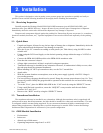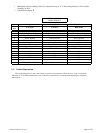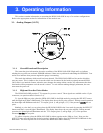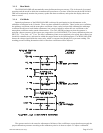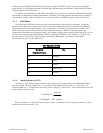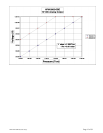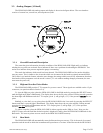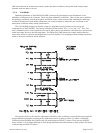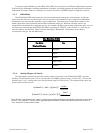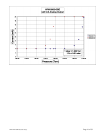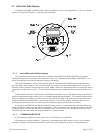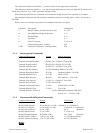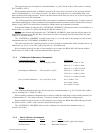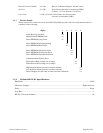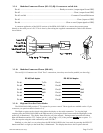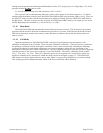
HPM-2002-OBEVacuum Gauge Page 15 of 39
To perform a full calibration on the HPM-2002-OBE, first use the Zero Coefficient Adjustment Procedure.
Followed by the Midrange Coefficient Adjustment Procedure, and finally perform the Atmosphere Coefficient
Adjustment Procedure. Sensor Coefficients are stored in the Sensor’s EEPROM upon exiting the Cal mode.
3.2.5. GAS Mode
The HPM-2002-OBE can provide true pressure measurements in many gas environments. At pressure
levels where the direct force piezoresistive sensor is operative, the instrument is gas composition independent
and measures the true pressure regardless of gas composition. The Pirani is gas composition sensitive so the
actual composition must be known and the Pirani calibrated in that gas. When the vacuum system’s gas
composition is dominated by a single gas species (for example, during system venting with an inert gas), the user
can enter a gas selection into the HPM-2002-OBE by rotating the ADJUST rotary encoder. To view the gas
selection, depress the SELECT button until the GAS light is illuminated. The number on the display
corresponds to the gas. See the table below.
Gas Selection Table
Gas Mode
Displayed Number
Gas
00 Nitrogen
01 Argon
02 Helium
03 Water Vapor
04 Custom
3.2.6. Analog Output (4-20mA)
The dual output option board provides current output proportional to the HPM-2002-OBE’s pressure
reading. The first channel (pins 5 & 10) corresponds to the higher-pressure range (1-1024 Torr). The second
channel (pins 7 & 11) corresponds to the lower pressure range (0-1000 mTorr). The equation below gives the
output current of the pressure:
() ()
()
Torr1024
mA16
*Torrp+mA4=1channelΙ
() ()()
⎟
⎠
⎞
⎜
⎝
⎛
+=Ι
mTorr
mA
mTorrpmAchannel
1000
16
*42
Note that for both channels, the output is always between 4mA and 20mA specifically, when the pressure goes
below 1 Torr, channel 1 current will be approaching its minimum of 4mA and when the pressure is above 1
Torr, channel 2 current will be 20mA.



